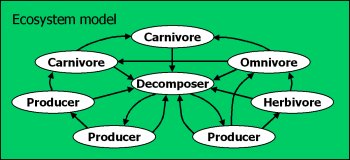Ecological Risk Assessment Guidelines
The ERA Process: Plan Assessment 
The development of an analysis plan is the first formal stage of an ERA. The risk assessor is responsible for this stage.
Collect Information on Context
Collect available information and data to achieve the following:
Evaluate information related to environmental policy and the management context.
Address issues including the sources of stressors, stressors' characteristics and exposure mechanisms as well as spatial and temporal aspects.
Describe characteristics of the ecosystem potentially at risk as well as the likely ecological effects of the stressors on the ecosystem.
...more
Develop Hypotheses
Draw up a cause-effect diagram of sources, stressors, exposure routes, end points, responses and measures representing the risk hypotheses.
Develop (a) risk hypothesis(es). The hypothesis(es) describe(s) what will be evaluated during the assessment. ...more
Risk hypotheses are predictions of relationships between stressor, exposure and the response of the assessment end points.
Select what to Protect
Describe the ecosystem potentially at risk according to functional and/or structural relationships (e.g. Ecosystem model).
Identify potential assessment end points:
Identify the ecological entities considered to be of value.
Identify the characteristic of the entities that are potentially at risk.
Confirm scientific (ecological and management) relevance.
Rigorously select assessment end point(s).
...more
Assessment end points are the definitivemeasures that scientifically and ecologically represent the broader management concerns.
Develop Plan to Evaluate Hypotheses
Develop an analysis plan that describes how the risk hypotheses will be assessed. Select and describe the measures of exposure, measures of effect and measures of ecosystem and receptor characteristics. Independent lines of evidence should be considered. Indicate how data will be analysed or modelled and how results will be presented. Discuss the analysis plan with the risk manager to ensure that the results will allow consideration of options and inform sound decisions. The analysis plan should be peer reviewed ...more
Collate Data and Information
Collate detailed information that is relevant to the risk hypothesis and analysis plan. ...more
Collate = Examine + Compare

New insights obtained during this phase may necessitate that the Agree on Objectives phase be revisited.